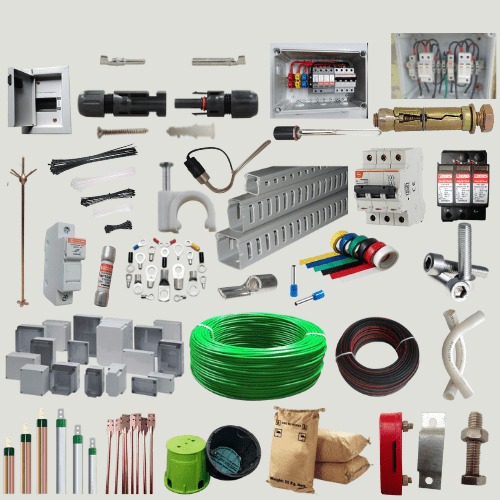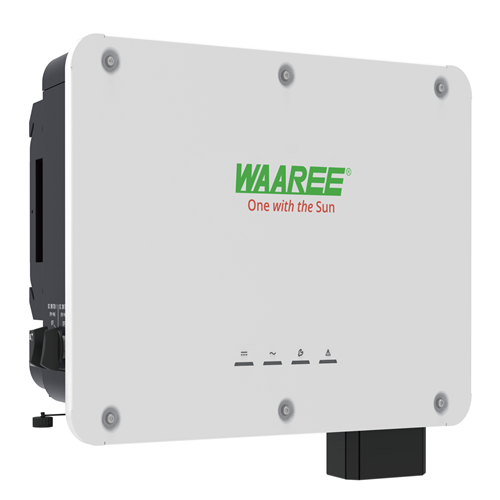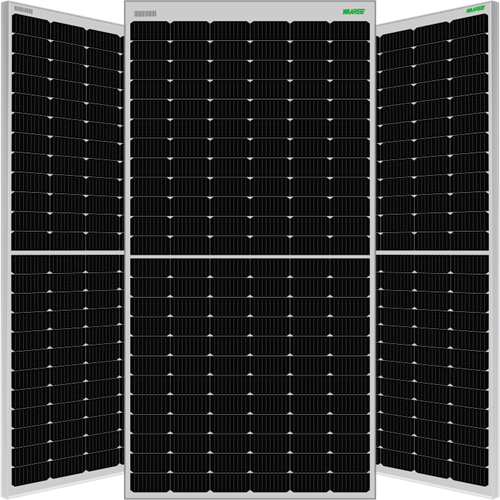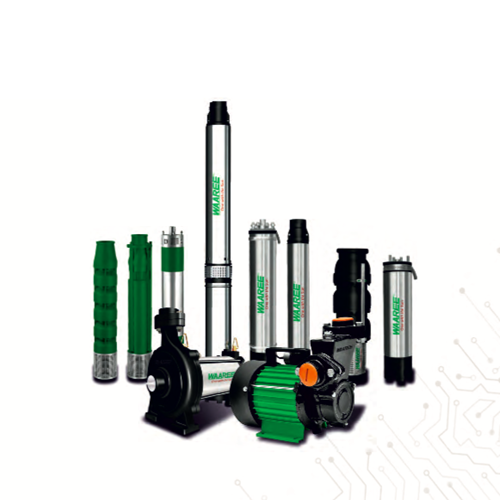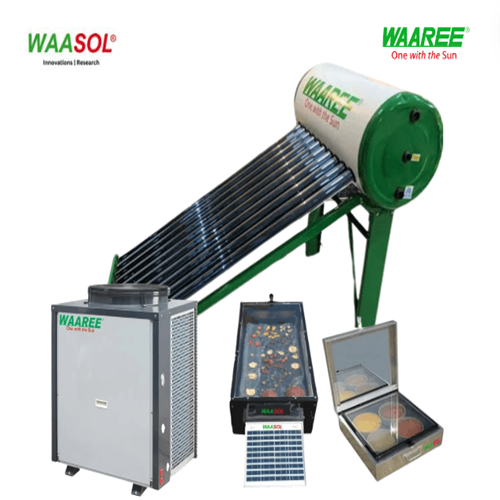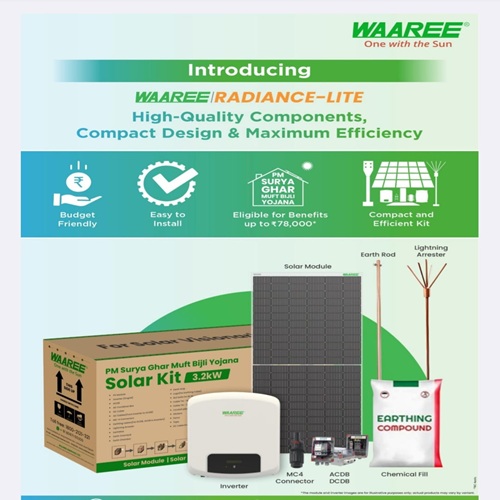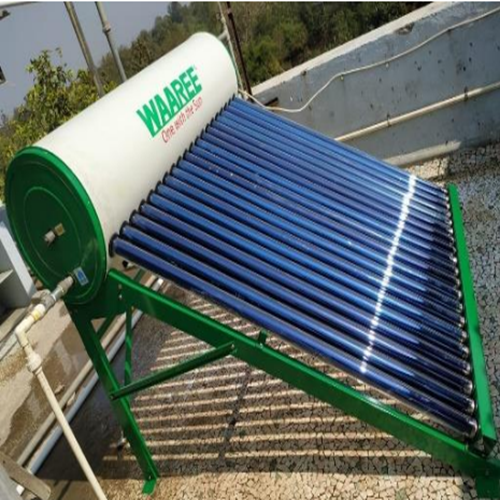
Solar Hot Water Systems
Product Description
Our Solar Hot Water Systems are designed to deliver reliable, eco-friendly, and cost-effective hot water solutions for residential, commercial, and industrial needs. Using advanced solar thermal technology, these systems harness renewable solar energy to heat water efficiently, reducing electricity bills and carbon footprint. With durable construction, easy installation, and low maintenance, our solar water heaters provide consistent performance all year round. Ideal for homes, hotels, hospitals, hostels, and industries, our Solar Hot Water Systems ensure sustainable living while saving energy costs.
1. Why should we install solar water heater?
Ans- With the Waasol Solar Water Heater, you become the owner of your energy system. You will enjoy low operational costs, be protected against any future energy price increase and experience high comfort levels in your daily hot water consumption.
2. Does this Solar Water Heater work in any climate?
Ans- Solar water heaters can operate in any climate. Performance varies depending, in part, on how much Solar irradiation is available at the site, but also, on how cold the water coming into the system. Only during rainy season, you will need a conventional backup system (Electric).
3. How does use of solar water heater help the environment?
Ans- A 100 liter system, the average size of a household of max.3 people, can prevent emissions of 1.5 tons of carbon dioxide per year. The reduction in emissions of carbon dioxide (one of the major greenhouse gases) can positively help in slowing down the pace of global warming
4. What if I have high pressure bath fittings such as rain showers, Jacuzzis or body jets?
Ans- Normal Thermosyphon system will not work. We have a range of pressurized systems available to cater to high pressure bath fittings.
5. Is there any maintenance required for SWH systems?
Ans- Solar Water Heaters once installed requires very little maintenance. Maintenance involves wiping the dust deposited on the glass surface once in 5 days. Wiping the panel every day will help increase the efficiency of the system. Other important thing to be taken care of is to see that the main cold-water tank from which water is supplied to the solar tank is always filled up to the level. Use of Automatic Level Controller can help in maintaining an optimum level of water. Evacuated tubes need to be replaced when they lose their vacuum or if cracked or broken
6. What if my area has hard water?
Ans- Hard water results in formation of scale deposit inside copper tubes in solar flat plate collectors. The result will be reduction of heat transfer through the layers of scale deposits. This require de-scaling acids to avoid the scaling of salts on the inner wall of tank or fube. Heat exchanger systems is the solution for this. Also, Waasol provide sacrificial anode in storage tank to protect system from hard water. Exclusive drain down facility provided in storage tank and flat plate collector to clean/service regularly. It will reduce the scale formation on solar water heaters.
7. What will height difference between Ground and solar tank or solar tank to cold water tank?
Ans- a. Height difference b/w Ground and Solar Tank around 4.5 Ft. b. Height difference b/w Solar Tank and Cold-water storage tank around 4Ft
8. How do I integrate the heater with my current plumbing system without any breakage
Ans- It can be connected with T-joints with existing plumbing, however, it requires skill set to integrate solar thermal system with existing pipe plumbing. Our system is very easy to install and integrate with all kinds of existing plumbing systems without any breakage. Our installation experts will visit your site or check terrace layout and provide a detailed plan on how the system can meet your requirement.
9. The sizes offered by you are in multiples of 100 litres. What if I prefer some other size like 520 litres
Ans- Normally, we have ready stocks of the standard sizes in multiples of 100 liters. Special sizes can be made on request and will take more delivery time
10. In which direction should the SWH system be placed?
The collector should face in the south direction.
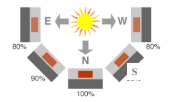
11. What shall I do in case some tube breaks? Can I replace the broken tube by myself?
Ans- you can replace the broken tube. In case of water leaking out of the system from broken tube, please shut the inlet and cutlet valves and inform the nearest dealer for the same.
12. What shall I do in case some panel leaks or break? Can I replace the broken panels by myself?
Ans - First you need to close the inlet valve and outlet valve from the tank. Secondly inform to our nearest dealers which will help them to replace the damaged parts. Customers on their own cannot change the panels as it may affect the system efficiency.
13. Are additional geysers required after installation of Solar Water Heating System?
Ans- The Solar Water Heating System has in built option of electrical back-up, and so no extra geysers are required in the bathrooms.
14. If different use points are scattered and the capacity required is large how can minimize the wastage of hot water in the pipelines?
Ans- In such a case, instead of a single large system, a number of smaller systems can be installed which have same total capacity as desired. These systems can be placed at locations closer to the use points, thus minimizing the piping cost and the wastage of hot water too.
15. Why 'new' ETC Technology is better than the 'old' FPC Technology?
Ans- The ETC technology is almost a decade old and thus not so new. This technology, though much superior and suitable than FPC technology, could not take-off being more expensive than FPC technology. It will be obvious that the only advantage FPC ever had over ETC was lesser price. But NOWADAYS, with recent worldwide advances in mass production techniques of evacuated tubes, ETC based systems are more cost effective than their FPC counterparts.
16. How much Lightening affect the FPC system?
Ans- It is advisable to earth/ground the copper circulation loop of the collector to avoid lightning related damage, or electrical safety issues.
17. How is the Solar Hot Water System specified? What is LPD?
Ans- The capacity of a solar hot water system is specified is LPD. It is a abbreviation of Liters Per Day. The intensity of Solar radiation varies throughout the day, hence capacity cannot be specified in terms of hourly output.
18. How are ETC tubes efficient from others?
Ans- Waasol make SWH system has three layered tubes of SS-CU-ALN
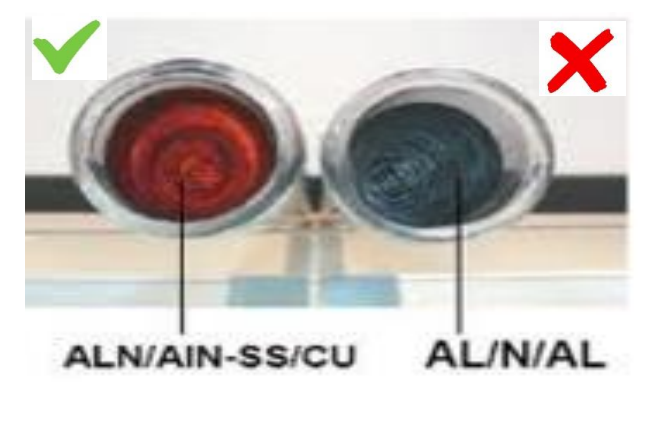
19.How are FPC collector efficient from others?
They are provided with NALSUN solar selective coating which as high absorptivity of solar radiation than normal collectors.
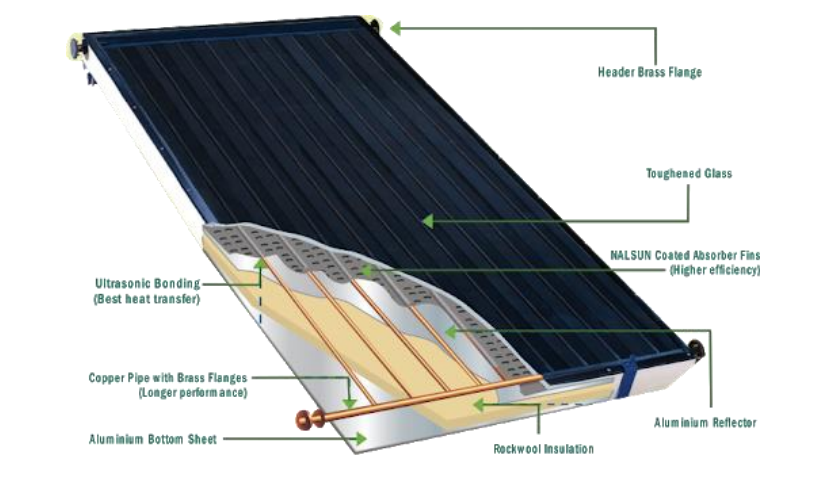
20. What is FTC?
Ans- FTC means Fixed Temperature Controller. The operation of the circulation pump of forced flow system needs to be controlled to avoid pumping of cold water into the hot water storage tank. In FTC control, it is achieved by monitoring the temperature at the outlet of the collector. The pump is switched ON only when the outlet temperature is higher than the SET temperature. If the temperature falls below the SET temperature, the pump is automatically switched OFF
21. Is pump required for the system?
Ans- Pump should be selected to meet the requirements such as maintain constant flow rate and to maintain the pressure of the system. Generally, pump is required where water head is low
22. How much wind speed sustained by the SWH system?
Ans- The standard frame, and frames kits are all designed to withstand wind speeds of up to 208km/h without damage for installation angle of 45° and less. For higher wind speeds additional frame components, lower installation angle and reinforcement of roof attachment may be required
23. How much snow load can the system withstand?
Ans- In areas prone to heavy snow falls, the solar collectors should ideally be installed at an angle of 450 or greater to help promote snow sliding off the panel. The solar collectors are able to withstand a maximum snow loading of 300kg/m2.
24. How do we identify a good solar water heater?
Ans- A good solar water heater should have sufficient collector area. For example, on a sunny winter day in North India, 1 sq. m. of collector area can heat around 50 liters of water to a temperature of 30-40°C. Typical flat plate collectors made in the country have an area of around 2 sq. m and are thus capable of heating 100 liters of water per day. Further, the collectors used are of good materials and the absorbers carry a good quality coating. (as per BIS Norms)
25. Is pump required for the system?
Ans - Pump should be selected to meet the requirements such as maintain constant flow rate and to maintain the pressure of the system. Generally, pump is required where water head is low
26. How do I select a solar water heater?
Ans -Before you purchase and install a solar water heating system, you should do the following: a. Consider the economics of a solar water-heating system b. Evaluate your site's solar resource c. Determine the correct system size d. Determine the system's energy efficiency e. Estimate and compare system costs f. Investigate local codes, covenants, and regulations
27. What is the maximum possible temperature it could attain?
Ans- About 60 to 80° C. The rise in temperature depends on:- a. Solar Radiation b. Weather Conditions c. No. of Solar panel collector
28. Does it generate hot water on all days and in all seasons of the year?
Ans - It generates hot water on - Clear sunny day-Maximum Partially cloudy day-Moderate
29. What about pipelines?
Ans- We can use following pipes for cold water & hot water- Galvanized steel pipes of class "B" for cold water line & precast PUF insulated. HDPE Pipe with "B" class Galvanized pipes for Hot Water Lines.
30. Can it be installed anywhere?
Yes, it can be installed on. a. Roof tops b. Building terrace c. Open Ground There should be: a. No shadowing b. South orientation of the collectors c. Collector Tilt = 30° to 45°
31. You said that the hot water will be available for 300-320 days in year. How about the rest of the days?
Ans - Every SWHS can be provided with auxiliary back up heating system by Electrical heater at extra cost.
32. How much money do we have to spend for maintenance?
Ans - Maintenance is negligible Periodic glass cleaning Check for leakages and valve functioning, if any
33. Are there any governmental incentives, subsidies, loans etc.?
Ans - there are many subsidies & policies made for SWHS as per the state- a. Soft loans from Bank & BAFL at low interest. b. 100% depreciation tax relief for profit making companies. c. No Octroi on SWHS
34. How many hours are required to heat the water?
Ans - Normally, 7 to 8 hours of normal solar radiation is required to heat the water upto 60°C.
35.Comparison between Evacuated Tube Collector & Flat Plate Collector
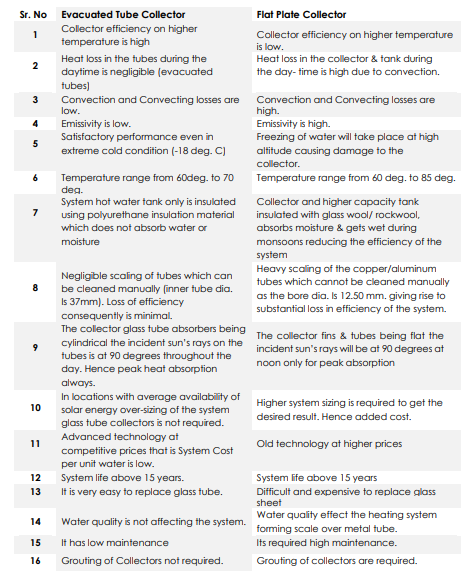
Price List
Data Sheet
Our Solar Hot Water Systems are designed to deliver reliable, eco-friendly, and cost-effective hot water solutions for residential, commercial, and industrial needs. Using advanced solar thermal technology, these systems harness renewable solar energy to heat water efficiently, reducing electricity bills and carbon footprint. With durable construction, easy installation, and low maintenance, our solar water heaters provide consistent performance all year round. Ideal for homes, hotels, hospitals, hostels, and industries, our Solar Hot Water Systems ensure sustainable living while saving energy costs.
1. Why should we install solar water heater?
Ans- With the Waasol Solar Water Heater, you become the owner of your energy system. You will enjoy low operational costs, be protected against any future energy price increase and experience high comfort levels in your daily hot water consumption.
2. Does this Solar Water Heater work in any climate?
Ans- Solar water heaters can operate in any climate. Performance varies depending, in part, on how much Solar irradiation is available at the site, but also, on how cold the water coming into the system. Only during rainy season, you will need a conventional backup system (Electric).
3. How does use of solar water heater help the environment?
Ans- A 100 liter system, the average size of a household of max.3 people, can prevent emissions of 1.5 tons of carbon dioxide per year. The reduction in emissions of carbon dioxide (one of the major greenhouse gases) can positively help in slowing down the pace of global warming
4. What if I have high pressure bath fittings such as rain showers, Jacuzzis or body jets?
Ans- Normal Thermosyphon system will not work. We have a range of pressurized systems available to cater to high pressure bath fittings.
5. Is there any maintenance required for SWH systems?
Ans- Solar Water Heaters once installed requires very little maintenance. Maintenance involves wiping the dust deposited on the glass surface once in 5 days. Wiping the panel every day will help increase the efficiency of the system. Other important thing to be taken care of is to see that the main cold-water tank from which water is supplied to the solar tank is always filled up to the level. Use of Automatic Level Controller can help in maintaining an optimum level of water. Evacuated tubes need to be replaced when they lose their vacuum or if cracked or broken
6. What if my area has hard water?
Ans- Hard water results in formation of scale deposit inside copper tubes in solar flat plate collectors. The result will be reduction of heat transfer through the layers of scale deposits. This require de-scaling acids to avoid the scaling of salts on the inner wall of tank or fube. Heat exchanger systems is the solution for this. Also, Waasol provide sacrificial anode in storage tank to protect system from hard water. Exclusive drain down facility provided in storage tank and flat plate collector to clean/service regularly. It will reduce the scale formation on solar water heaters.
7. What will height difference between Ground and solar tank or solar tank to cold water tank?
Ans- a. Height difference b/w Ground and Solar Tank around 4.5 Ft. b. Height difference b/w Solar Tank and Cold-water storage tank around 4Ft
8. How do I integrate the heater with my current plumbing system without any breakage
Ans- It can be connected with T-joints with existing plumbing, however, it requires skill set to integrate solar thermal system with existing pipe plumbing. Our system is very easy to install and integrate with all kinds of existing plumbing systems without any breakage. Our installation experts will visit your site or check terrace layout and provide a detailed plan on how the system can meet your requirement.
9. The sizes offered by you are in multiples of 100 litres. What if I prefer some other size like 520 litres
Ans- Normally, we have ready stocks of the standard sizes in multiples of 100 liters. Special sizes can be made on request and will take more delivery time
10. In which direction should the SWH system be placed?
The collector should face in the south direction.

11. What shall I do in case some tube breaks? Can I replace the broken tube by myself?
Ans- you can replace the broken tube. In case of water leaking out of the system from broken tube, please shut the inlet and cutlet valves and inform the nearest dealer for the same.
12. What shall I do in case some panel leaks or break? Can I replace the broken panels by myself?
Ans - First you need to close the inlet valve and outlet valve from the tank. Secondly inform to our nearest dealers which will help them to replace the damaged parts. Customers on their own cannot change the panels as it may affect the system efficiency.
13. Are additional geysers required after installation of Solar Water Heating System?
Ans- The Solar Water Heating System has in built option of electrical back-up, and so no extra geysers are required in the bathrooms.
14. If different use points are scattered and the capacity required is large how can minimize the wastage of hot water in the pipelines?
Ans- In such a case, instead of a single large system, a number of smaller systems can be installed which have same total capacity as desired. These systems can be placed at locations closer to the use points, thus minimizing the piping cost and the wastage of hot water too.
15. Why 'new' ETC Technology is better than the 'old' FPC Technology?
Ans- The ETC technology is almost a decade old and thus not so new. This technology, though much superior and suitable than FPC technology, could not take-off being more expensive than FPC technology. It will be obvious that the only advantage FPC ever had over ETC was lesser price. But NOWADAYS, with recent worldwide advances in mass production techniques of evacuated tubes, ETC based systems are more cost effective than their FPC counterparts.
16. How much Lightening affect the FPC system?
Ans- It is advisable to earth/ground the copper circulation loop of the collector to avoid lightning related damage, or electrical safety issues.
17. How is the Solar Hot Water System specified? What is LPD?
Ans- The capacity of a solar hot water system is specified is LPD. It is a abbreviation of Liters Per Day. The intensity of Solar radiation varies throughout the day, hence capacity cannot be specified in terms of hourly output.
18. How are ETC tubes efficient from others?
Ans- Waasol make SWH system has three layered tubes of SS-CU-ALN

19.How are FPC collector efficient from others?
They are provided with NALSUN solar selective coating which as high absorptivity of solar radiation than normal collectors.

20. What is FTC?
Ans- FTC means Fixed Temperature Controller. The operation of the circulation pump of forced flow system needs to be controlled to avoid pumping of cold water into the hot water storage tank. In FTC control, it is achieved by monitoring the temperature at the outlet of the collector. The pump is switched ON only when the outlet temperature is higher than the SET temperature. If the temperature falls below the SET temperature, the pump is automatically switched OFF
21. Is pump required for the system?
Ans- Pump should be selected to meet the requirements such as maintain constant flow rate and to maintain the pressure of the system. Generally, pump is required where water head is low
22. How much wind speed sustained by the SWH system?
Ans- The standard frame, and frames kits are all designed to withstand wind speeds of up to 208km/h without damage for installation angle of 45° and less. For higher wind speeds additional frame components, lower installation angle and reinforcement of roof attachment may be required
23. How much snow load can the system withstand?
Ans- In areas prone to heavy snow falls, the solar collectors should ideally be installed at an angle of 450 or greater to help promote snow sliding off the panel. The solar collectors are able to withstand a maximum snow loading of 300kg/m2.
24. How do we identify a good solar water heater?
Ans- A good solar water heater should have sufficient collector area. For example, on a sunny winter day in North India, 1 sq. m. of collector area can heat around 50 liters of water to a temperature of 30-40°C. Typical flat plate collectors made in the country have an area of around 2 sq. m and are thus capable of heating 100 liters of water per day. Further, the collectors used are of good materials and the absorbers carry a good quality coating. (as per BIS Norms)
25. Is pump required for the system?
Ans - Pump should be selected to meet the requirements such as maintain constant flow rate and to maintain the pressure of the system. Generally, pump is required where water head is low
26. How do I select a solar water heater?
Ans -Before you purchase and install a solar water heating system, you should do the following: a. Consider the economics of a solar water-heating system b. Evaluate your site's solar resource c. Determine the correct system size d. Determine the system's energy efficiency e. Estimate and compare system costs f. Investigate local codes, covenants, and regulations
27. What is the maximum possible temperature it could attain?
Ans- About 60 to 80° C. The rise in temperature depends on:- a. Solar Radiation b. Weather Conditions c. No. of Solar panel collector
28. Does it generate hot water on all days and in all seasons of the year?
Ans - It generates hot water on - Clear sunny day-Maximum Partially cloudy day-Moderate
29. What about pipelines?
Ans- We can use following pipes for cold water & hot water- Galvanized steel pipes of class "B" for cold water line & precast PUF insulated. HDPE Pipe with "B" class Galvanized pipes for Hot Water Lines.
30. Can it be installed anywhere?
Yes, it can be installed on. a. Roof tops b. Building terrace c. Open Ground There should be: a. No shadowing b. South orientation of the collectors c. Collector Tilt = 30° to 45°
31. You said that the hot water will be available for 300-320 days in year. How about the rest of the days?
Ans - Every SWHS can be provided with auxiliary back up heating system by Electrical heater at extra cost.
32. How much money do we have to spend for maintenance?
Ans - Maintenance is negligible Periodic glass cleaning Check for leakages and valve functioning, if any
33. Are there any governmental incentives, subsidies, loans etc.?
Ans - there are many subsidies & policies made for SWHS as per the state- a. Soft loans from Bank & BAFL at low interest. b. 100% depreciation tax relief for profit making companies. c. No Octroi on SWHS
34. How many hours are required to heat the water?
Ans - Normally, 7 to 8 hours of normal solar radiation is required to heat the water upto 60°C.
35.Comparison between Evacuated Tube Collector & Flat Plate Collector

